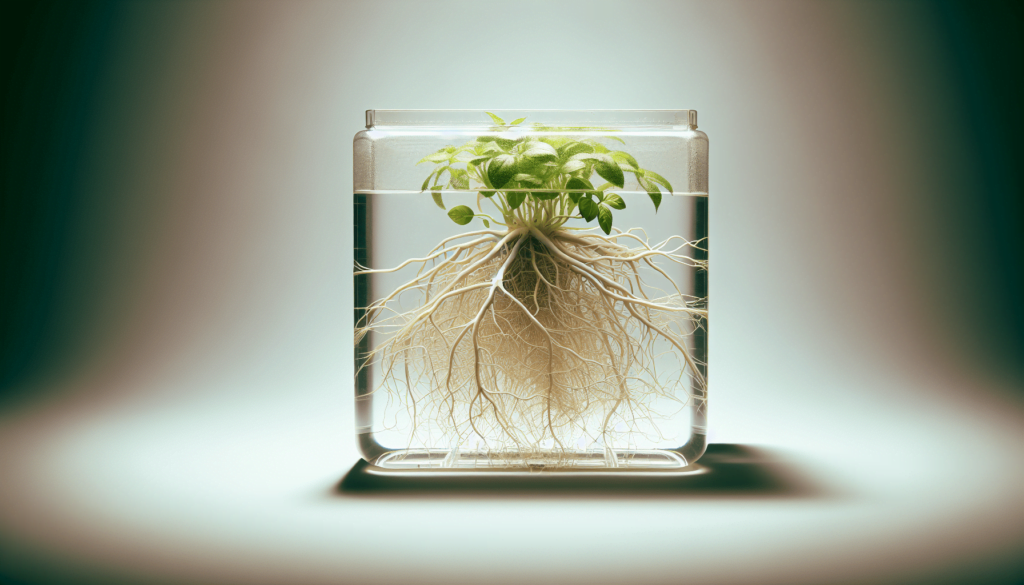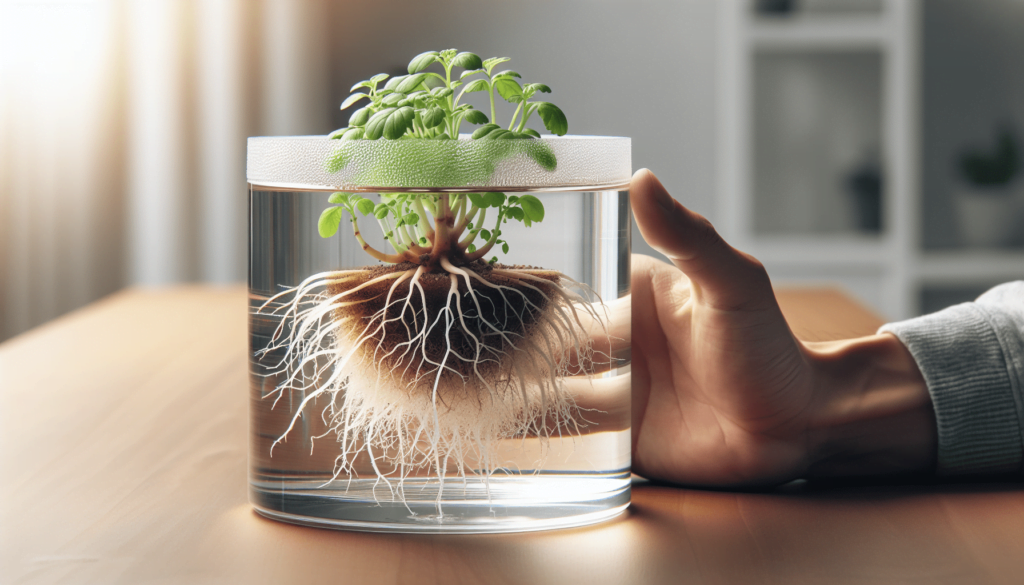Have you ever wondered how we can grow plants without soil, using less energy and technology? Imagine a scenario where there’s no electricity available, but we still want to continue growing our fresh greens. This is where the Kratky Method comes in as a revolutionary solution.

Introduction to Kratky Method: A Passive Hydroponic Technique
Named after Dr. B.A. Kratky, the Kratky Method is a passive hydroponic technique that allows us to grow plants without the need for electricity, pumps, or any complex gadgets. This method distinguishes itself by suspending plants above a nutrient solution, with their roots partially submerged. It simplifies the concept of hydroponics, making it accessible for anyone interested in cultivating plants at home, in schools, or in areas where power supply is inconsistent.
How the Kratky Method Works
To get started, we place plants in net pots or similar holders that are suspended above a reservoir containing a nutrient solution. The roots extend into the nutrient solution, accessing the nutrients necessary for growth while the upper part of the roots is exposed to air. This balances the need for both oxygen and nutrients, allowing plants to thrive without an aeration system.
By using this passive method, we also eliminate the risk of mechanical failures and reduce the dependency on continuous power supply, thus making it an efficient and sustainable growing technique.
Setting Up the Kratky System
Setting up our own Kratky System involves a few simple steps:
- Container Selection: Choose a container that is opaque to minimize algae growth and large enough for the plants we’re growing.
- Nutrient Solution: Fill the container with a hydroponic nutrient solution, leaving some space at the top to allow air exposure for the roots.
- Plant Holders: Use net pots or other suitable holders to suspend the plants above the nutrient solution.
- Planting: Place seedlings or cuttings into the net pots, ensuring that the roots can reach the nutrient solution below.
By following these steps, we can create a self-sustaining environment for our plants, with minimal maintenance required.
Immediate Effects of Power Outage
When using traditional hydroponic systems, a power outage can have immediate and detrimental effects. However, with the Kratky Method, we can navigate these challenges more smoothly.
Day 1: Thriving with Residual Resources
During the first day of a power outage, our plants will continue to thrive using the residual oxygen and nutrients available in the system. Since the Kratky Method is not dependent on electricity, there’s no immediate negative impact, and our plants can continue to grow as usual.
Days 2-3: Search for Air Begins
After a couple of days, the roots will start searching for more air, gradually beginning to form air roots. There might be minor stress on the plants, but this is a natural transition as they adapt to the changed environment. During this period, it’s essential for us to monitor the growth and ensure the plants are not showing any significant signs of distress.
Critical Transition Period
The days following the initial stages of a power outage are critical for ensuring the continued health and growth of our plants.
Days 4-7: Monitoring Water Levels
During days 4 to 7, it’s crucial to carefully monitor the water levels in the nutrient solution. As the water level drops, more roots will be exposed to air, facilitating oxygen absorption. If the water levels are too high, there’s a risk of root rot due to lack of oxygen. Conversely, if the water levels drop too low, the roots may not be able to access the nutrients they need. This delicate balance needs our vigilant attention to maintain optimal conditions.
Long-Term Effects
If the power outage extends beyond seven days, our plants will enter a new phase of adaptation and survival.
Day 7+: Air Root Development
By this time, plants should have developed sufficient air roots to meet their oxygen needs. It is now crucial for us to continue monitoring nutrient levels and water quality. Nutrients can become imbalanced over time, so we must be prepared to make necessary adjustments to maintain the proper nutrient concentrations.

Preventing Problems
In any hydroponic system, prevention is key to ensuring the health and productivity of our plants. Here are some strategies to prevent problems when using the Kratky Method during power outages:
Monitor Water Levels
Keeping a close eye on water levels can help ensure that our plants get a continuous supply of both oxygen and nutrients. A gradual drop in water levels is ideal, as it provides the roots with the necessary oxygen while still accessing the nutrient solution.
Check Nutrient Solutions Regularly
Nutrient solutions can change over time due to plant uptake and evaporation. Regular adjustments are required to maintain the right balance of nutrients. By using a simple testing kit, we can measure and correct nutrient levels to prevent any deficiencies or toxicities.
Watch for Stress Signs
Plants communicate their needs through visual signs. Yellowing leaves, stunted growth, or wilting are indicators of stress that signal an issue with the growing conditions. By promptly addressing these signs, we can prevent more severe problems from developing.
Backup Power Solutions
Although the Kratky Method thrives without electricity, it can be useful to have a backup power solution for other aspects of our gardening setup. Generators or battery backups can provide temporary power to continue using lights, heating, or other essential equipment that our plants may rely on.
Final Thoughts
Transitioning to the Kratky Method during periods of power outages is not just viable; it can be an effective solution with careful monitoring and management. By understanding and preparing for the potential challenges, we can ensure that our plants survive and thrive even without a continuous power supply.
Preparation and vigilance are essential keys to a successful transition. Through diligent monitoring of water levels, nutrient solutions, and signs of plant stress, we can maintain a stable and productive hydroponic system. The Kratky Method offers an excellent approach for growing plants sustainably and with minimal reliance on external resources, making it an ideal choice for both beginners and seasoned gardeners alike.
Happy growing, and here’s to the bountiful harvests ahead with the Kratky Method!
Forum
Got something to share or a question to ask? Jump in and start a conversation! Whether it’s tips, advice, or just sharing your experiences, we’d love to hear from you. Don’t be shy—your input could inspire or help someone else!- This forum has 1 topic, and was last updated 10 months, 2 weeks ago by .
- Topic
- Voices
- Last Post
- You must be logged in to create new topics.
Register Here
Forum
Got something to share or a question to ask? Jump in and start a conversation! Whether it’s tips, advice, or just sharing your experiences, we’d love to hear from you. Don’t be shy—your input could inspire or help someone else!- This forum has 1 topic, and was last updated 10 months, 2 weeks ago by .
- Topic
- Voices
- Last Post
- You must be logged in to create new topics.


